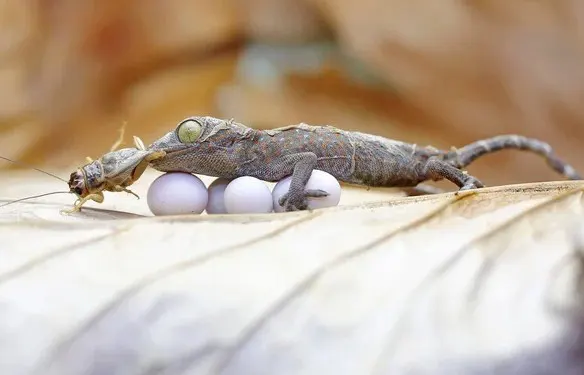Common Disease Prevention for Lizards
Owning a lizard is a rewarding experience, but these fascinating creatures rely entirely on their keepers for their health and well-being. Proactive care and understanding potential health issues are key to preventing common diseases. Early detection often makes the difference between a minor issue and a serious illness.
The Foundation: Optimal Husbandry
The vast majority of health problems in captive lizards stem from inadequate husbandry. Getting the environment right is the single most important preventative measure.

- Correct Enclosure Size & Type: Research the adult size and activity level of your species. Arboreal lizards need vertical space, terrestrial lizards need floor space.
- Temperature Gradient: Lizards are ectothermic (cold-blooded) and need a range of temperatures to regulate their body heat. Provide a warm basking spot and a cooler area using appropriate heat lamps or mats, monitored with thermometers.
- Proper Humidity: Humidity needs vary drastically between desert species (low humidity) and tropical species (high humidity). Use a hygrometer and adjust with misting, foggers, water bowls, or ventilation as needed.
- Essential Lighting (UVB): Diurnal (day-active) lizards require UVB lighting to synthesize Vitamin D3, crucial for calcium absorption. Without it, they develop Metabolic Bone Disease. Use species-appropriate UVB bulbs and replace them regularly.
- Substrate Choice: Choose a substrate that is safe and appropriate. Loose substrates like sand or fine chips can cause impaction if ingested. Paper towels, reptile carpet, or bioactive setups (for experienced keepers) are often safer alternatives.
- Cleanliness: Regularly clean and disinfect the enclosure, water bowls, and food dishes to prevent bacterial, fungal, and parasitic infections. Spot clean daily and deep clean periodically.

Nutrition and Hydration
A balanced diet and constant access to fresh water are vital.
- Species-Specific Diet: Research whether your lizard is an insectivore, herbivore, omnivore, or specialist feeder. Offer a varied and appropriate diet.
- Gut-Loading & Supplementation: Feed feeder insects a nutritious diet (gut-loading) before offering them to your lizard. Dust insects or salads with calcium (usually calcium without D3 if UVB is adequate, or with D3 if recommended for the species/setup) and a multivitamin supplement according to a schedule recommended for your specific lizard species. Over-supplementation can also cause problems.
- Water Availability: Provide fresh, clean water daily in a shallow bowl they can easily access. Some species prefer to lap water droplets from leaves (requiring misting) or moving water (drippers).
Common Health Issues and Prevention Strategies
Understanding potential issues helps in recognizing early signs and maintaining preventative practices.
Metabolic Bone Disease (MBD)
- Cause: Imbalance of Calcium, Phosphorus, and Vitamin D3, usually due to inadequate UVB lighting or improper diet/supplementation.
- Prevention: Provide correct UVB lighting, appropriate calcium/vitamin supplements, and a balanced diet.
- Signs: Lethargy, weakness, deformed bones, soft jaw, tremors, difficulty moving.
Respiratory Infections (RI)
- Cause: Often linked to incorrect temperatures (too cold), improper humidity (too high or too low), poor ventilation, or stress.
- Prevention: Maintain correct temperature gradients and humidity levels, ensure good ventilation, and keep the enclosure clean.
- Signs: Wheezing, clicking sounds, open-mouth breathing, mucus around nose or mouth, lethargy.
Impaction
- Cause: Ingestion of indigestible material (like loose substrate) or feeding prey items that are too large. Dehydration can contribute.
- Prevention: Use safe substrates, feed appropriately sized prey, ensure proper hydration and temperatures (needed for digestion).
- Signs: Loss of appetite, lethargy, bloating, straining to defecate or lack of defecation.
Parasites (Internal & External)
- Cause: Poor hygiene, contaminated food/water, introduction of new animals without quarantine, wild-caught origins. Mites are common external parasites.
- Prevention: Strict hygiene, quarantine new reptiles, regular vet checks (fecal exams), source animals from reputable breeders.
- Signs: Weight loss, lethargy, abnormal feces (internal); visible mites (tiny moving specks, often around eyes/vents), skin irritation, excessive soaking (external).
Dysecdysis (Shedding Issues)
- Cause: Primarily incorrect humidity levels (usually too low). Dehydration, poor nutrition, and stress can also contribute.
- Prevention: Maintain appropriate humidity for the species, provide rough surfaces for rubbing, ensure good hydration, and offer humid hides if needed.
- Signs: Retained shed, especially on toes, tail tips, and around eyes. Can constrict blood flow if left untreated.
Recognize Early Signs: Subtle changes in behavior, appetite, or appearance can be the first indication of illness. Observe your lizard daily. Any concerns should prompt a visit to a qualified reptile veterinarian.
Preventing disease in lizards primarily involves meticulous attention to their environmental and dietary needs. By understanding and providing the correct husbandry, you significantly increase the chances of your reptilian companion living a long, healthy life.